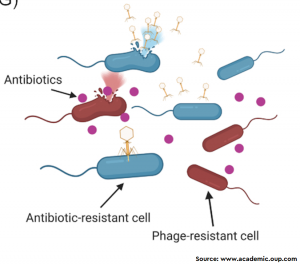Antimicrobial resistance (AMR) is a global health issue. The irrational use of antibiotics in human, animal and environment sectors give rise to AMR. Apprehensions are rife that AMR may follow similar patterns as seen in case of epidemic outbreaks developing into pandemics. In this situation, it becomes imperative to understand the true distribution of resistant infections so that appropriate action can be undertaken. Various research articles estimated and published the burden of drug resistant infections covering several pathogens for regions like the USA, Thailand, EU, and several other locations. Though these publications act as crucial sources of information, they still lack the overall clarity of the global burden of AMR. Hence, a group of AMR experts joined hands and made a huge, tremendous effort to compile, analyse and publish the data in Lancet. The article focused on comprehensive analysis of the burden of AMR to date, producing estimates for 204 countries and territories, 23 bacterial pathogens, and 88 pathogen- drug combinations, from 471 million individual records in 2019.
According to the authors, the global burden of deaths associated with AMR is estimated to be 4.95 million (the deaths that can be prevented if all resistant infections were replaced by no infections), while those attributed to AMR are 1.27 million (deaths that can be prevented if all resistant infections were replaced by susceptible infections) for the year 2019. The three most common infectious syndromes contributing to this high number of AMR deaths globally were lower respiratory and thorax infections, bloodstream infections and intra-abdominal infections, responsible for more than three-fourths of the deaths. The six pathogens responsible for the most AMR deaths were reported as Escherichia coli, Staphylococcus aureus, Klebsiella pneumoniae, Streptococcus pneumoniae, Acinetobacter baumannii and Pseudomonas aeruginosa. Of these, E.coli and K.pneumoniae resistance to at least one antibiotic contributed to most AMR deaths.
The results of the present study highlighted that variation in data exists among different regions. For instance, the Australasia Region (Australia, New Zealand, and some neighboring islands) had the lowest burden with 28 deaths per 100000 associated with AMR, while the Western sub-Saharan Africa region had the highest burden with 114.8 deaths per 100000. The South Asia region of which India is a part, reported a very high number of deaths associated with and attributed to AMR (13,90,000 and 3,89,000 respectively) in 2019. The death rates in this region were higher than 75 per 100000, higher than the global values. The most common pathogen responsible for AMR deaths in this region is E.coli followed by K.pneumoniae. The situation is serious!
To learn more about the global scenario, please visit the website of Lancet (Link).
Global Burden of Bacterial Antimicrobial Resistance in 2019: A Systematic Analysis







